Contents
- I. Introduction
- II. Threats to Biodiversity
- III. Benefits of Habitat Conservation for Biodiversity
- IV. Strategies for Habitat Conservation
- V. Role of Government and Policy
- VI. Community Involvement in Habitat Conservation
- VII. Economic Benefits of Habitat Conservation
- VIII. Challenges and Limitations of Habitat Conservation
- IX. Case Studies of Successful Habitat Conservation Projects
I. Introduction
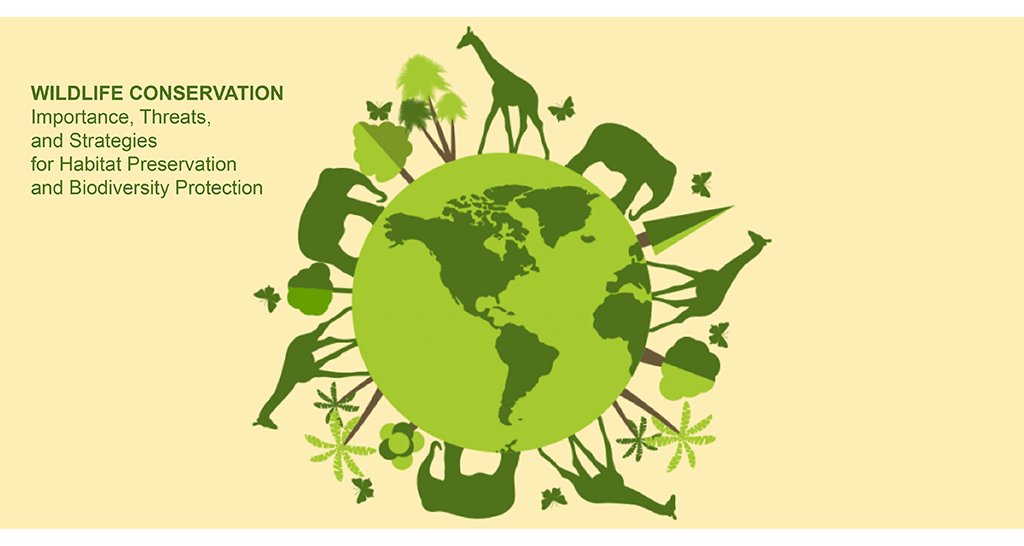
Welcome to the fascinating world of habitat conservation and its crucial role in preserving biodiversity. In this article, we will delve into the importance of protecting habitats for the survival of various species and the overall health of our planet.
As human activities continue to expand and encroach upon natural habitats, it becomes imperative to understand the significance of conserving these ecosystems. Habitat loss is one of the leading causes of species extinction, and without proactive measures, we risk losing invaluable components of our planet’s biodiversity.
By conserving habitats, we not only protect the plants and animals that call them home but also ensure the stability of entire ecosystems. Habitats provide essential resources such as food, water, and shelter, which are vital for the survival and reproduction of countless species.
Furthermore, intact habitats offer numerous ecosystem services that benefit humans as well. From regulating climate patterns to purifying air and water, these services are essential for our well-being. Conserving habitats is not just an act of environmental stewardship but also a means of safeguarding our own future.
In the following sections, we will explore the various reasons why habitat conservation is crucial, the threats facing habitats, and the strategies and initiatives in place to protect them. Join us on this journey to gain a deeper understanding of the intricate relationship between habitats and biodiversity, and discover how each of us can contribute to their preservation.
II. Threats to Biodiversity
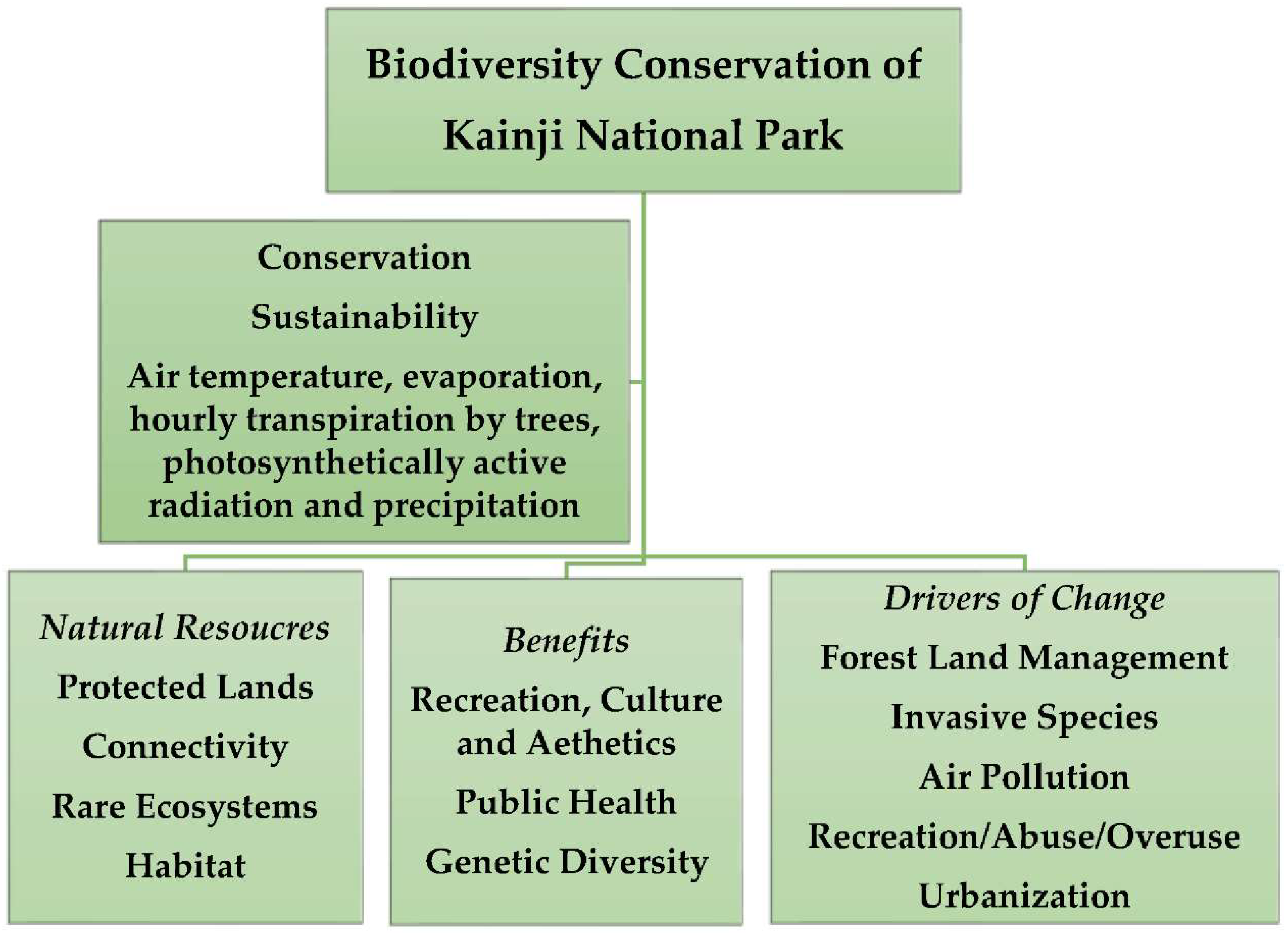
Biodiversity, the variety of life on Earth, is facing numerous threats that are pushing many species towards extinction. These threats are primarily caused by human activities and are rapidly degrading the habitats and ecosystems that support a wide range of organisms. In this section, we will explore the major threats to biodiversity and their detrimental effects on the delicate balance of our planet.
A. Habitat destruction
Habitat destruction is one of the leading causes of biodiversity loss worldwide. As human populations continue to grow, the demand for resources and land for agriculture, urban development, and infrastructure projects is increasing at an alarming rate. This relentless expansion is resulting in the destruction and fragmentation of natural habitats, leaving many species without suitable places to live and reproduce.
1. Deforestation
Deforestation, the clearing of forests for various purposes, is a major contributor to habitat destruction. Forests are home to a significant portion of Earth’s biodiversity, providing shelter, food, and breeding grounds for countless species. However, large-scale deforestation for timber extraction, agriculture, and the expansion of human settlements is causing irreparable damage to these vital ecosystems.
The loss of forests not only directly eliminates the habitats of numerous species but also disrupts the intricate web of interactions between plants, animals, and microorganisms. This disruption can have cascading effects on entire ecosystems, leading to the decline or extinction of species that depend on these forests for survival.
2. Urbanization
The rapid growth of cities and urban areas is another significant threat to biodiversity. As urbanization expands, natural habitats are converted into concrete jungles, resulting in the loss of critical ecosystems. Wetlands, grasslands, and even coastal areas are being transformed into buildings, roads, and parking lots, leaving little room for wildlife to thrive.
Urban areas also introduce various disturbances, such as pollution, noise, and artificial lighting, which can further disrupt the natural behavior and patterns of many species. The encroachment of human settlements into wildlife habitats often leads to increased human-wildlife conflicts, as animals are forced to adapt to the presence of humans or seek alternative habitats.
B. Pollution
Pollution, both on land and in water, poses a significant threat to biodiversity. Human activities, such as industrial processes, agriculture, and improper waste disposal, release harmful substances into the environment, causing widespread pollution that affects ecosystems and the organisms within them.
1. Air pollution
Air pollution, primarily caused by the burning of fossil fuels, industrial emissions, and vehicle exhaust, has detrimental effects on both terrestrial and aquatic ecosystems. Pollutants such as nitrogen oxides, sulfur dioxide, and particulate matter can have direct toxic effects on plants, animals, and microorganisms, leading to reduced biodiversity and impaired ecosystem functioning.
Additionally, air pollution contributes to the formation of acid rain, which can acidify soils and bodies of water, further degrading habitats and making them inhospitable for many species. The accumulation of pollutants in the atmosphere also contributes to climate change, which exacerbates the threats to biodiversity.
2. Water pollution
Water pollution, caused by the discharge of industrial waste, agricultural runoff, and improper sewage treatment, poses a significant threat to aquatic ecosystems and the species that depend on them. Pollutants such as heavy metals, pesticides, and fertilizers can contaminate water bodies, leading to the degradation of water quality and the loss of biodiversity.
Water pollution can have immediate and long-term effects on aquatic organisms, including fish, amphibians, and invertebrates. It can disrupt their reproductive cycles, impair their immune systems, and even cause death. The loss of aquatic biodiversity not only affects the species directly impacted by pollution but also disrupts the intricate food webs and ecological processes that rely on a healthy and diverse aquatic ecosystem.
C. Climate change
Climate change is perhaps one of the most significant threats to biodiversity in the modern era. The increase in greenhouse gas emissions, primarily from human activities such as burning fossil fuels and deforestation, is causing a rapid rise in global temperatures. This rise in temperatures is disrupting ecosystems and pushing many species to their limits.
1. Rising temperatures
Rising temperatures due to climate change have far-reaching consequences for biodiversity. Many species are adapted to specific temperature ranges and are sensitive to even small changes in their environment. As temperatures increase, species may struggle to survive in their current habitats, as the conditions become less suitable for their survival and reproduction.
Warmer temperatures can also lead to shifts in the distribution of species, as they migrate in search of more favorable conditions. However, not all species can adapt or migrate quickly enough to keep pace with the changing climate, leading to population declines and, in some cases, extinction.
2. Extreme weather events
Climate change is also increasing the frequency and intensity of extreme weather events, such as hurricanes, droughts, and heatwaves. These events can have devastating effects on ecosystems and the species within them. Floods can destroy habitats, while droughts can lead to water scarcity and the loss of crucial resources for many organisms.
Extreme weather events can also disrupt the delicate balance of ecosystems, causing shifts in species composition and altering the availability of food and shelter. These disruptions can have cascading effects throughout the food chain, impacting the survival and reproductive success of many species.
III. Benefits of Habitat Conservation for Biodiversity
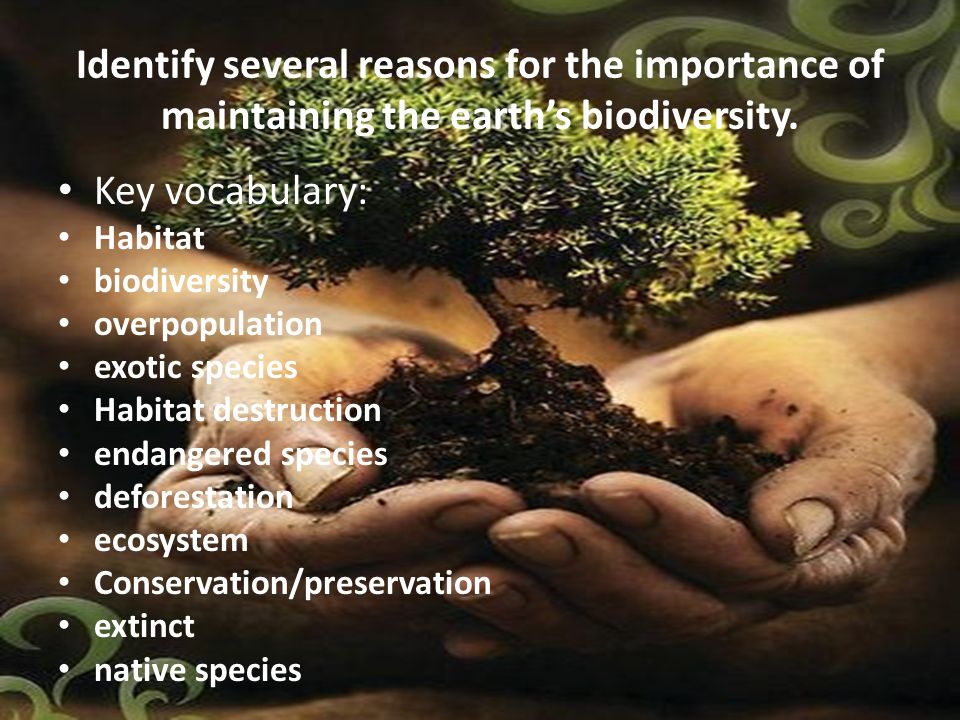
Habitat conservation plays a crucial role in preserving biodiversity and ensuring the long-term survival of ecosystems. By protecting natural habitats, we can safeguard the intricate web of life that exists on our planet. In this section, we will explore the various benefits of habitat conservation for biodiversity.
A. Preservation of ecosystems
One of the primary benefits of habitat conservation is the preservation of ecosystems. Ecosystems are complex networks of living organisms, their physical environment, and the interactions between them. They provide essential services such as clean air, water, and soil, as well as habitats for countless species.
1. Role of keystone species
Within ecosystems, certain species play a disproportionately large role in maintaining the balance and functioning of the entire system. These species, known as keystone species, have a significant impact on the structure and diversity of their habitats. By conserving their habitats, we ensure the survival of keystone species and the stability of the ecosystems they inhabit.
2. Maintenance of food chains
Food chains are intricate networks of predator-prey relationships that sustain life in ecosystems. Each species has a specific role in the food chain, and the loss of even a single species can have far-reaching consequences. Habitat conservation helps maintain the integrity of food chains by ensuring that all species have access to the resources they need to survive and thrive.
B. Protection of endangered species
Another critical benefit of habitat conservation is the protection of endangered species. Endangered species are those that are at risk of extinction due to various factors, including habitat loss, pollution, and climate change. By preserving their habitats, we provide a safe haven for these species and give them a fighting chance for survival.
1. Case studies of successful conservation efforts
There have been numerous successful conservation efforts that have led to the recovery of endangered species. For example, the conservation of the California condor’s habitat and the implementation of captive breeding programs have helped increase their population from a mere 27 individuals in the 1980s to over 400 individuals today. These success stories highlight the importance of habitat conservation in saving endangered species from the brink of extinction.
C. Maintenance of genetic diversity
Genetic diversity is essential for the long-term survival and adaptability of species. It allows populations to withstand environmental changes, diseases, and other threats. Habitat conservation plays a crucial role in maintaining genetic diversity by preserving the natural habitats where species have evolved and adapted over millions of years.
1. Importance of genetic variation
Genetic variation refers to the differences in DNA sequences among individuals of the same species. It provides the raw material for natural selection and evolution. Habitats that are rich in genetic variation are more likely to produce individuals with traits that are advantageous in changing environments.
2. Potential for adaptation and resilience
Conserving habitats ensures that species have the necessary genetic diversity to adapt to changing conditions. This adaptability is crucial in the face of climate change, habitat degradation, and other anthropogenic pressures. By maintaining genetic diversity, habitat conservation helps promote resilience in ecosystems and increases their chances of survival in the long run.
IV. Strategies for Habitat Conservation
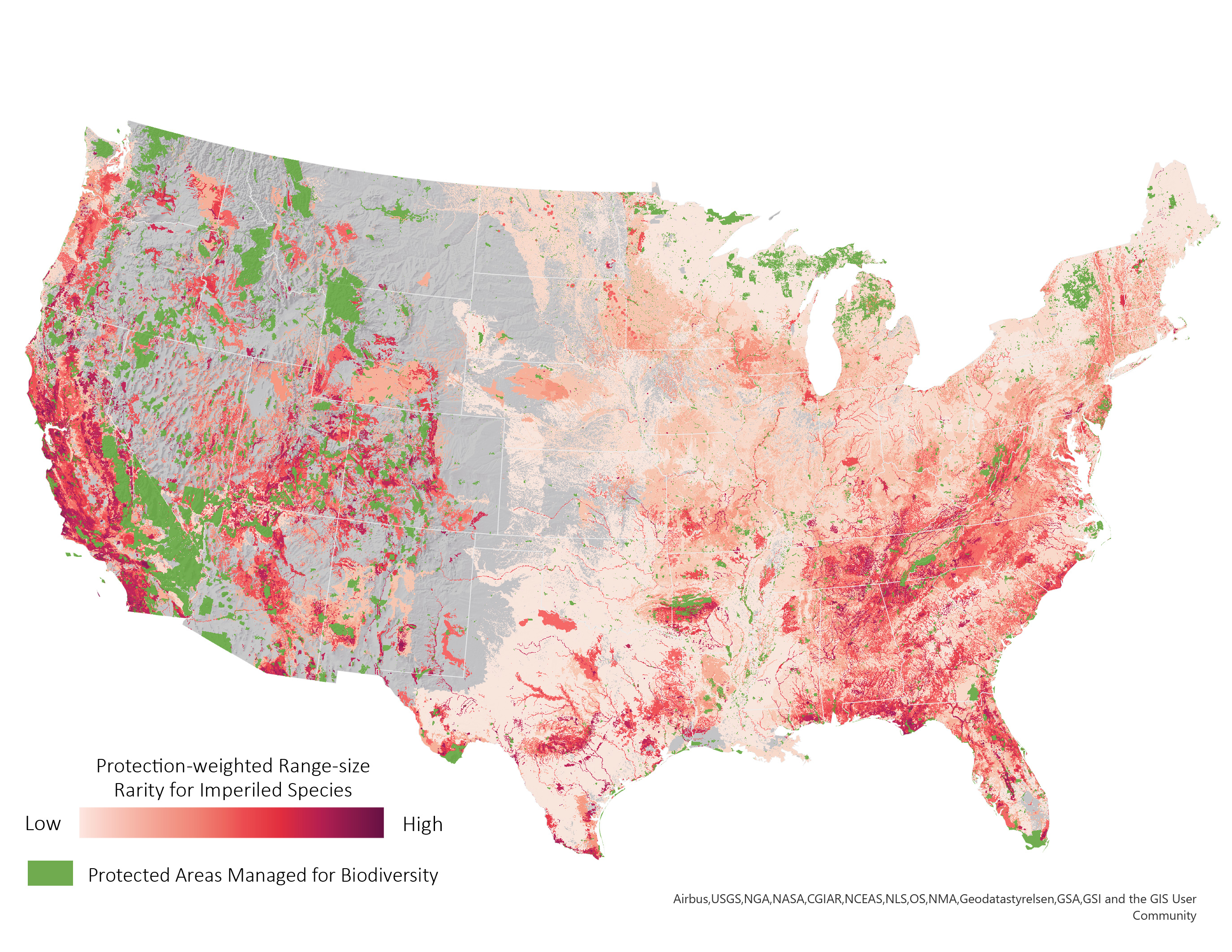
Habitat conservation plays a crucial role in preserving biodiversity and ensuring the long-term survival of various species. It involves implementing strategies that protect and restore natural habitats, as well as promoting sustainable land use practices. In this section, we will explore some effective strategies for habitat conservation.
A. Protected areas
1. National parks and reserves:
National parks and reserves are designated areas that are legally protected to preserve their natural and cultural resources. These areas provide a safe haven for a wide range of plant and animal species, allowing them to thrive without human interference. National parks often offer recreational opportunities for visitors, allowing them to appreciate and connect with nature while ensuring the conservation of habitats.
2. Wildlife sanctuaries:
Wildlife sanctuaries are another form of protected areas that focus specifically on the conservation of wildlife. These areas provide a safe habitat for endangered species and serve as breeding grounds for various animals. Wildlife sanctuaries often have strict regulations to minimize human disturbance and protect the natural habitats from encroachment.
B. Habitat restoration
1. Reforestation projects:
Reforestation projects involve planting trees in areas where forests have been depleted or destroyed. This helps restore the natural habitat for many species, as forests provide food, shelter, and breeding grounds for numerous plants and animals. Reforestation projects also contribute to carbon sequestration, mitigating the effects of climate change.
2. Wetland restoration initiatives:
Wetlands are among the most productive and diverse ecosystems on Earth, supporting a wide range of plant and animal species. However, they are also highly vulnerable to degradation and loss. Wetland restoration initiatives aim to restore and protect these valuable habitats by reestablishing natural hydrological processes, removing invasive species, and enhancing water quality. This helps maintain the ecological balance and provides essential breeding and feeding grounds for migratory birds and other wildlife.
C. Sustainable land use practices
1. Agroforestry:
Agroforestry is a land management system that combines agricultural crops with trees and shrubs. This practice helps conserve habitats by providing shade, reducing soil erosion, and improving soil fertility. Agroforestry also promotes biodiversity by creating a diverse range of microhabitats within agricultural landscapes, supporting a variety of plant and animal species.
2. Organic farming:
Organic farming methods prioritize the use of natural inputs and techniques to cultivate crops and raise livestock. By avoiding the use of synthetic pesticides and fertilizers, organic farming helps protect the soil, water, and air quality. This, in turn, benefits the surrounding habitats and reduces the negative impacts on biodiversity. Organic farms often incorporate wildlife-friendly practices, such as maintaining hedgerows and providing nesting sites, to support local ecosystems.
By implementing these strategies for habitat conservation, we can contribute to the preservation of biodiversity and ensure a sustainable future for our planet. It is essential for individuals, communities, and governments to work together to protect and restore habitats, as they are the foundation for the survival of countless species and the overall health of our ecosystems.
V. Role of Government and Policy
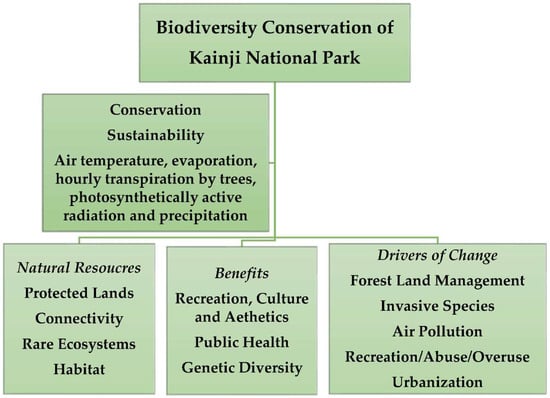
The role of government and policy is crucial in ensuring the conservation of habitats for biodiversity. International agreements and conventions, as well as national legislation and regulations, play a significant role in protecting and preserving natural habitats. In this section, we will explore the importance of these agreements and conventions, as well as the impact of national legislation and regulations on habitat conservation.
A. International agreements and conventions
1. Convention on Biological Diversity
The Convention on Biological Diversity (CBD) is a global agreement that aims to conserve biodiversity, sustainably use its components, and ensure the fair and equitable sharing of benefits arising from the utilization of genetic resources. The CBD recognizes the importance of protecting habitats as a means to safeguard biodiversity. It encourages countries to establish protected areas and promote the conservation and sustainable use of ecosystems.
2. Ramsar Convention on Wetlands
The Ramsar Convention on Wetlands is an international treaty that emphasizes the conservation and wise use of wetlands. Wetlands are vital habitats that support a wide range of plant and animal species. The Ramsar Convention promotes the conservation and sustainable use of wetlands through the designation of Wetlands of International Importance (Ramsar Sites). These sites serve as models for the conservation and wise use of wetlands globally.
B. National legislation and regulations
1. Endangered Species Act
The Endangered Species Act (ESA) is a national legislation in many countries that provides protection to species that are at risk of extinction. The ESA aims to prevent the extinction of endangered and threatened species by conserving their habitats. It prohibits the destruction or modification of critical habitats and requires the development and implementation of recovery plans for listed species.
2. Environmental Impact Assessments
Environmental Impact Assessments (EIAs) are processes that evaluate the potential environmental impacts of proposed projects or activities. EIAs are required by many countries as part of their national legislation and regulations. These assessments help identify potential impacts on habitats and biodiversity and provide recommendations for mitigating or avoiding adverse effects. EIAs play a vital role in ensuring that development projects are carried out in an environmentally responsible manner.
The role of government and policy in habitat conservation cannot be overstated. International agreements and conventions provide a framework for global cooperation in protecting habitats and conserving biodiversity. National legislation and regulations, such as the Endangered Species Act and Environmental Impact Assessments, ensure that habitat conservation is enforced at the local level. By implementing these policies, governments can contribute to the preservation of habitats and the protection of biodiversity for future generations.
VI. Community Involvement in Habitat Conservation
Community involvement plays a crucial role in habitat conservation efforts. By engaging local communities and raising awareness through education programs, we can empower individuals to take action and make a positive impact on the environment. Additionally, citizen science initiatives allow community members to actively participate in monitoring and data collection, contributing valuable information to conservation efforts. In this section, we will explore the importance of environmental education, the benefits of engaging local communities, and examples of successful citizen science projects.
A. Education and awareness programs
1. Importance of environmental education
Environmental education is essential for fostering a sense of responsibility and understanding among individuals. By providing knowledge about the importance of habitat conservation, we can inspire people to make informed decisions and take actions that support biodiversity. Environmental education programs can be conducted in schools, community centers, and other public spaces to reach a wide audience.
2. Engaging local communities
Engaging local communities is crucial for effective habitat conservation. By involving community members in conservation projects, we can create a sense of ownership and pride in preserving natural habitats. This can be achieved through workshops, seminars, and community events that promote active participation and collaboration. By working together, we can achieve greater success in protecting and restoring habitats.
B. Citizen science initiatives
1. Monitoring and data collection
Citizen science initiatives involve the participation of community members in scientific research and data collection. This approach allows for a large-scale collection of data, which can provide valuable insights into the status and trends of various habitats and species. By involving citizens in monitoring efforts, we can gather data that would otherwise be challenging to obtain. This data can then be used to inform conservation strategies and decision-making processes.
2. Examples of successful citizen science projects
There have been numerous successful citizen science projects that have contributed to habitat conservation. One such example is the Great Backyard Bird Count, where individuals from around the world observe and record bird species in their local areas. This project has provided valuable data on bird populations and migration patterns, helping scientists understand the impact of habitat loss and climate change on bird species.
Another example is the Monarch Watch program, which engages citizens in monitoring monarch butterfly populations and their migration patterns. By tagging and tracking individual butterflies, participants contribute to our understanding of monarch biology and conservation needs. This information is crucial for developing effective conservation strategies to protect the monarch butterfly and its habitat.
VII. Economic Benefits of Habitat Conservation
Habitat conservation plays a crucial role in preserving biodiversity and maintaining the delicate balance of ecosystems. While the primary focus of conservation efforts is often on the environmental benefits, it is important to recognize the significant economic advantages that habitat conservation can bring. In this section, we will explore two key economic benefits of habitat conservation: ecotourism and ecosystem services.
A. Ecotourism
1. Revenue generation
Habitat conservation areas, such as national parks and wildlife reserves, attract millions of tourists each year. These visitors are drawn to the unique natural beauty and diverse wildlife that these protected areas offer. As a result, ecotourism has emerged as a thriving industry, generating substantial revenue for local communities and governments.
By preserving habitats and the species that inhabit them, ecotourism provides opportunities for nature-based recreational activities, such as wildlife safaris, birdwatching, and hiking. Tourists are willing to pay a premium for these experiences, contributing to the local economy through accommodation, transportation, food, and other services.
Furthermore, ecotourism creates employment opportunities for local communities. From tour guides and park rangers to hospitality staff and artisans, the tourism industry supports a wide range of jobs. This not only helps alleviate poverty but also promotes sustainable economic development in the long run.
2. Job creation
Ecotourism not only generates direct employment opportunities but also stimulates job creation in related sectors. As the demand for ecotourism grows, there is a need for infrastructure development, including the construction of hotels, lodges, and visitor centers. This, in turn, creates jobs in the construction industry.
Additionally, the growth of ecotourism often leads to the establishment of small businesses catering to the needs of tourists, such as restaurants, souvenir shops, and transportation services. These businesses provide livelihoods for local entrepreneurs and contribute to the overall economic prosperity of the region.
B. Ecosystem services
1. Water purification
Habitats, such as wetlands and forests, play a vital role in maintaining water quality. They act as natural filters, removing pollutants and impurities from water bodies. By conserving these habitats, we ensure a clean and reliable water supply for both human consumption and agricultural activities.
When habitats are destroyed or degraded, the water purification services they provide are compromised. This can lead to increased costs for water treatment and purification, which ultimately burden the economy. By investing in habitat conservation, we can reduce these costs and ensure the availability of clean water for future generations.
2. Carbon sequestration
Habitats, particularly forests, are excellent carbon sinks. They absorb carbon dioxide from the atmosphere through photosynthesis and store it in their biomass. This process, known as carbon sequestration, helps mitigate climate change by reducing greenhouse gas emissions.
Conserving habitats, especially old-growth forests, is crucial for maintaining their carbon sequestration capacity. By protecting these ecosystems, we can contribute to global efforts to combat climate change. Additionally, carbon sequestration projects, such as forest carbon offset programs, can provide economic incentives for habitat conservation.
VIII. Challenges and Limitations of Habitat Conservation
Habitat conservation plays a crucial role in preserving biodiversity and maintaining the delicate balance of ecosystems. However, it is not without its challenges and limitations. In this section, we will explore some of the key obstacles that conservation efforts face and discuss potential solutions.
A. Conflicts with development projects
1. Balancing economic growth and conservation
One of the primary challenges in habitat conservation is the conflict between conservation goals and development projects. As human populations continue to grow, the demand for resources and infrastructure also increases. This often leads to the destruction or alteration of natural habitats to make way for urbanization, agriculture, and industrial activities.
While economic growth is important for societal progress, it is crucial to strike a balance between development and conservation. This requires careful planning and the implementation of sustainable practices that minimize the negative impacts on ecosystems. It is essential to consider the long-term consequences of development projects and prioritize the preservation of critical habitats.
2. Mitigation measures
To address the conflicts between development projects and habitat conservation, mitigation measures can be implemented. These measures aim to minimize or compensate for the negative impacts on ecosystems. For example, if a construction project is planned in an area with important wildlife habitats, developers can take steps to minimize habitat loss by implementing measures such as creating wildlife corridors or establishing protected areas nearby.
By incorporating mitigation measures into development plans, it is possible to reduce the ecological footprint of human activities and ensure the preservation of biodiversity.
B. Lack of funding and resources
1. Importance of financial support
Habitat conservation requires significant financial resources to support research, monitoring, and conservation initiatives. However, funding for conservation projects is often limited, and competition for resources is fierce. This lack of financial support can hinder the implementation of effective conservation strategies and compromise the long-term success of conservation efforts.
It is crucial for governments, organizations, and individuals to recognize the importance of investing in habitat conservation. By allocating adequate funding, we can support research, habitat restoration, and the establishment of protected areas. Additionally, public-private partnerships and collaborations can help leverage resources and maximize the impact of conservation initiatives.
2. Collaboration between stakeholders
Addressing the challenges of habitat conservation requires collaboration between various stakeholders, including government agencies, non-profit organizations, local communities, and businesses. Each stakeholder brings unique perspectives, expertise, and resources to the table, making collaboration essential for effective conservation.
By working together, stakeholders can share knowledge, pool resources, and develop innovative solutions to conservation challenges. This collaboration can also help build public support and raise awareness about the importance of habitat conservation.
IX. Case Studies of Successful Habitat Conservation Projects
In this section, we will explore three case studies of successful habitat conservation projects that have made a significant impact on biodiversity. These projects serve as inspiring examples of how dedicated efforts can preserve and protect our natural habitats.
A. Serengeti National Park, Tanzania
Serengeti National Park, located in Tanzania, is renowned for its vast savannahs, diverse wildlife, and the annual wildebeest migration. This iconic park covers an area of approximately 14,750 square kilometers and is home to an incredible array of species.
The conservation efforts in Serengeti National Park have focused on preserving the park’s unique ecosystems and ensuring the survival of its key species. The park management has implemented various strategies, including anti-poaching measures, habitat restoration, and community engagement.
One of the notable success stories in Serengeti National Park is the recovery of the black rhinoceros population. Through rigorous anti-poaching efforts and habitat protection, the number of black rhinos has steadily increased over the years. This achievement highlights the importance of proactive conservation measures in safeguarding endangered species.
Furthermore, Serengeti National Park has been successful in maintaining a delicate balance between wildlife conservation and sustainable tourism. Strict regulations and responsible tourism practices have ensured that visitors can experience the park’s wonders while minimizing their impact on the environment.
B. Great Barrier Reef Marine Park, Australia
The Great Barrier Reef, located off the coast of Queensland, Australia, is the world’s largest coral reef system and a UNESCO World Heritage site. This magnificent ecosystem is home to a staggering variety of marine life, including corals, fish, turtles, and sharks.
Recognizing the urgent need to protect this fragile ecosystem, the Australian government established the Great Barrier Reef Marine Park in 1975. This marine park covers an area of approximately 344,400 square kilometers and is managed through a collaborative approach involving government agencies, scientists, and local communities.
The conservation efforts in the Great Barrier Reef Marine Park have focused on addressing key threats such as climate change, water pollution, and overfishing. The park management has implemented strict regulations to limit fishing activities, reduce pollution runoff, and mitigate the impacts of climate change.
Additionally, extensive research and monitoring programs have been conducted to assess the health of the reef and identify areas in need of targeted conservation efforts. These initiatives have led to the implementation of innovative solutions, such as coral restoration projects and the development of resilient coral species.
Despite the ongoing challenges, the conservation efforts in the Great Barrier Reef Marine Park have yielded positive results. The park serves as a global model for effective marine conservation, demonstrating the importance of long-term planning, scientific research, and community involvement.
C. Costa Rica’s National Parks
Costa Rica, known for its rich biodiversity and stunning landscapes, has established a network of national parks and protected areas to safeguard its natural treasures. These protected areas cover approximately 25% of the country’s land area and encompass a wide range of ecosystems, including rainforests, cloud forests, and coastal habitats.
The conservation efforts in Costa Rica’s national parks have been driven by a strong commitment to sustainable development and environmental stewardship. The country has pioneered the concept of ecotourism, which promotes responsible travel practices and generates revenue for conservation initiatives.
One of the notable success stories in Costa Rica is the recovery of the scarlet macaw population in Corcovado National Park. Through habitat restoration, anti-poaching measures, and community engagement, the park management has successfully increased the number of scarlet macaws in the area. This achievement highlights the positive impact of collaborative conservation efforts.
Furthermore, Costa Rica’s national parks have become living laboratories for scientific research and education. These protected areas provide valuable opportunities for studying biodiversity, understanding ecosystem dynamics, and raising awareness about the importance of conservation.
